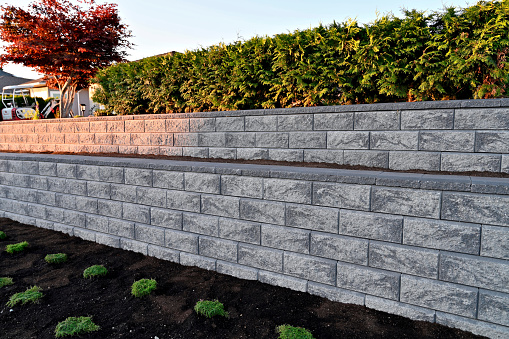
Block retaining walls are a popular choice for homeowners looking to improve the appearance and functionality of their outdoor spaces. Whether you want to create a beautiful garden or level out a sloped yard, a block retaining wall can help you achieve your goals. In this beginner’s guide, we will explore the benefits of block retaining walls, their installation process, and the different types of blocks available.
Benefits of Block Retaining Walls
Block retaining walls have a number of benefits that make them a popular choice for landscaping projects. They are strong, durable, and can withstand a great deal of weight, making them ideal for holding back soil and preventing erosion. They also add an aesthetic appeal to any landscape, as they come in a variety of styles, sizes, and colors.
Installation Process
Installing a block retaining wall requires careful planning and preparation. The first step is to determine the location and size of the wall, as well as the amount of material needed for the project. Once this is done, the ground must be prepared by removing any debris, leveling the area, and ensuring proper drainage.
Next, the blocks must be laid out in the desired pattern and secured in place with concrete adhesive. Additional layers of blocks are added until the desired height is reached, with each layer staggered to provide greater stability. The final step is to backfill the area behind the wall with soil and compact it to prevent erosion.
Types of Blocks
Block retaining walls come in a variety of types, each with its own unique style and functionality. The most popular types of blocks are concrete, natural stone, and interlocking concrete pavers.
Concrete blocks are the most common type of block used in retaining walls. They are available in a range of sizes and colors, and can be stacked in a variety of patterns to create a unique look.
Natural stone blocks are a popular choice for homeowners looking for a more natural and organic look. They are available in a range of shapes and sizes and can be laid out in a variety of patterns.
Interlocking concrete pavers are a popular choice for homeowners looking for a low-maintenance and durable option. They are easy to install and can be arranged in a variety of patterns to create a unique look.
In conclusion, block retaining walls are a great addition to any outdoor space. They are strong, durable, and add an aesthetic appeal to any landscape. If you are interested in installing a block retaining wall, be sure to consult with a professional to ensure that the project is done correctly. Thank you for reading, and if you have any questions, feel free to contact us at this page: Contact Vikings Masonry & Turf.